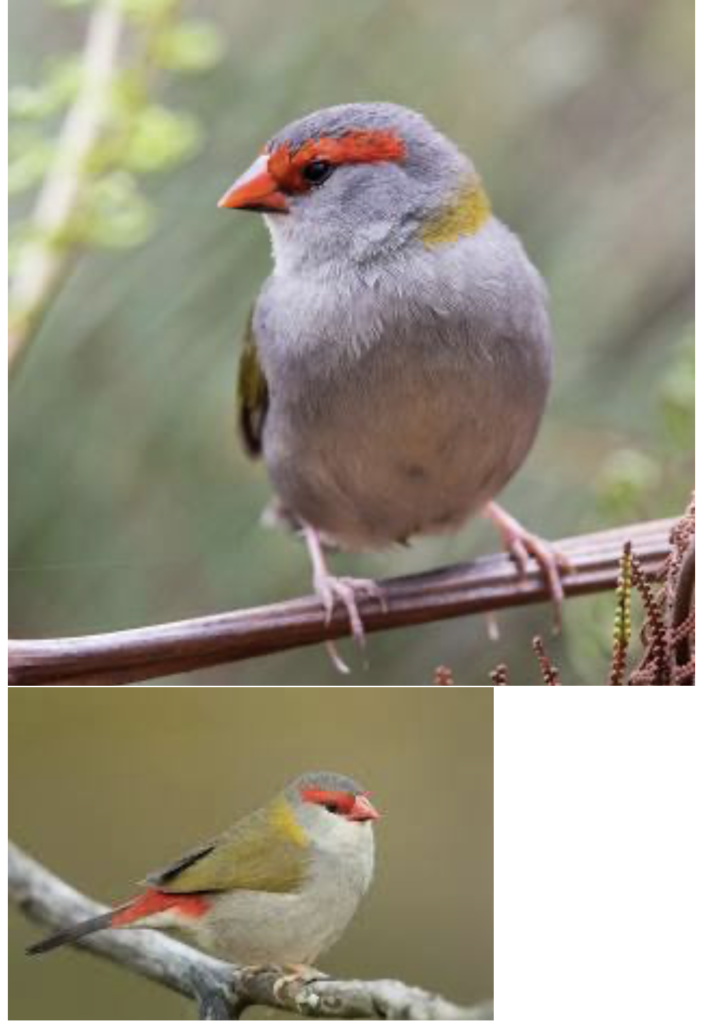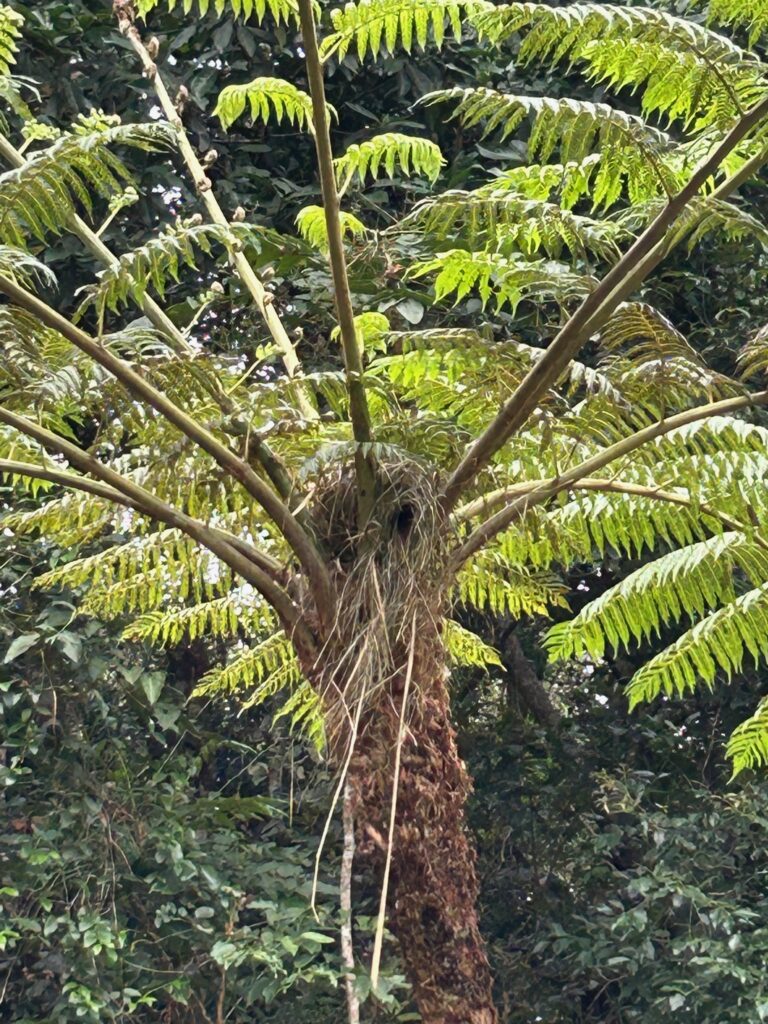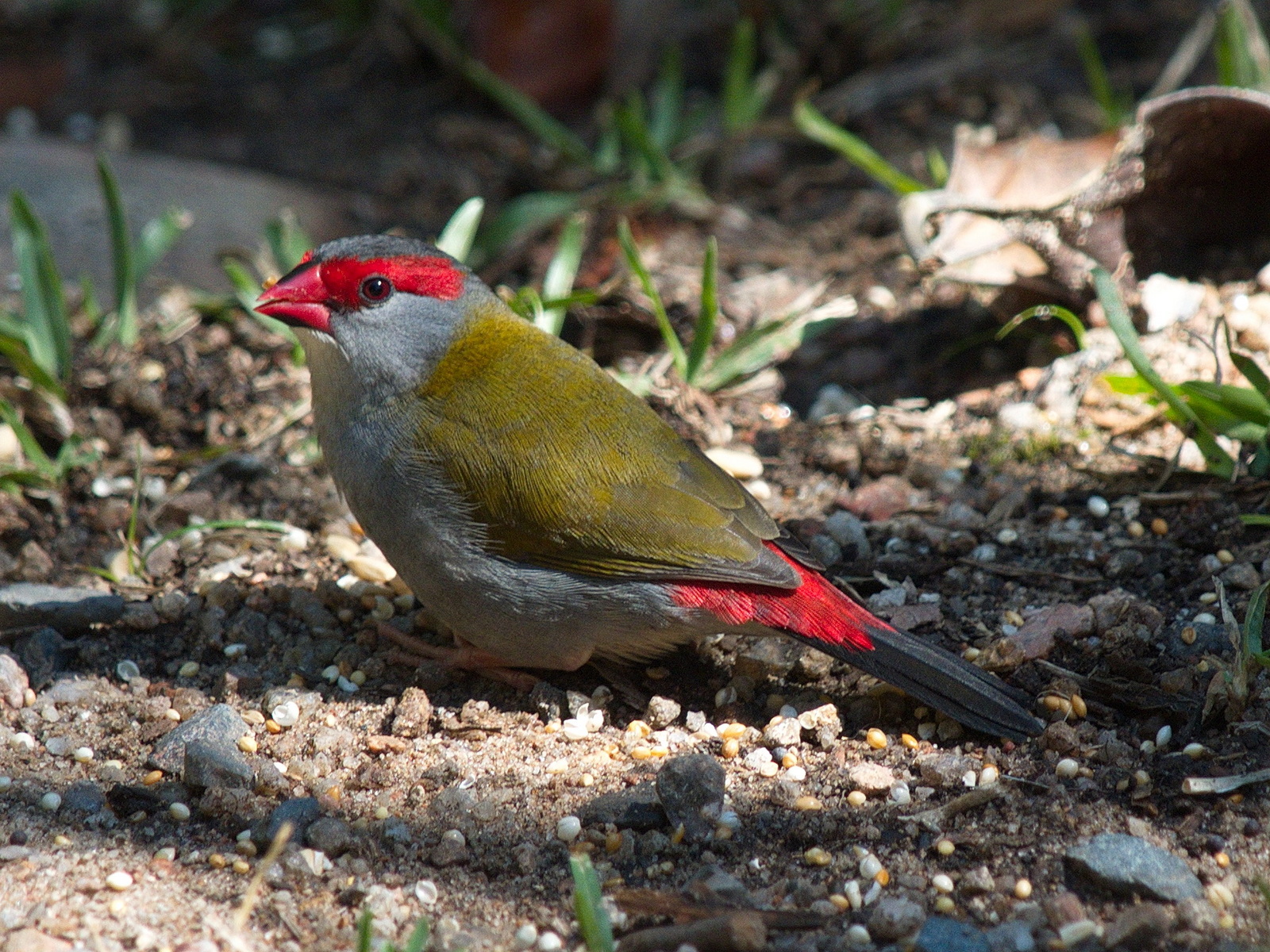Red-browed finches (Neochmia temporalis) are a relatively common sight around village gardens at Paluma, mostly in open areas on lawns – especially when the lawn gets a bit long and there are seed heads. They are often seen feeding on the ground where there are crimson rosellas also feasting on grass seeds. They are said to feed on both native and non-native grass seeds. They are a beautiful and distinctive small finch easily recognised by their bright red eyebrow, red rump and red beak with otherwise olive green and grey plumage. If disturbed they will quickly fly away into dense undergrowth where they are hard to spot. They are also hard to photograph as they are fast-moving little birds and they don’t sit still. The two photos below have been reproduced from the Birdlife Australia website.

Red-browed finches (Photos from Birdlife Australia website).
Over the past couple of weekends (about 8 days) I have been lucky enough to watch the progress of a pair of very busy red-browed finches building their nest in close proximity to my place. The finishing touches to the nest were being made late last Sunday afternoon and one of the birds had taken to sitting in the nest – perhaps eggs had already been laid?
The nest is located in the high crown of a native tree fern in an open (garden) area. Birdlife Australia describes the red-browed finch nest as “a large domed nest with a side entrance, woven from grass and small twigs. Nests are usually built 2 to 3 metres above the ground in dense shrubs”. This description is entirely accurate for the nest I have observed. The photo below shows the (largely) completed nest in the top of the tree fern, dome-shaped and with a small rounded entrance. The entrance faces westerly away from the prevailing winds and rain in that particular location/micro-climate. Clever little finches!
According to my research, both parents share the nest-building (which I also observed), the incubation of eggs and feeding of the young. Four to six white eggs are laid per clutch two to three times per year, mainly between October and April. Juveniles are said to be fully independent within 28 days. I look forward to observing the nesting process and hopefully the fledging of some new little red-browed finches in the coming month.

Text & Photo (of tree fern nest) by Michele Bird

Great post Michele. I look forward to updates on the nest. These beautiful little birds will come into a bird feeder which has canary seed in it, and they can become more willing to tolerate nosy photographers as a result. Here is a photo of one of our locals searching for fallen seeds beneath the feeder.
Jamie
here is the photo

Great photo Jamie. Your image clearly shows the distinctive and impressive red brow, beak and rump.
Thanks for that lovely story Michelle . However I have to correct your comment about lorikeets feeding on grass seeds . Lorikeets eat fruit and nectar and their mouth parts are not designed to eat seeds . You probably mean the Crimson Rosellas which love grass seeds!
Oops, yes I did mean rosella’s. Thanks for picking that up. I will correct this reference in the post.